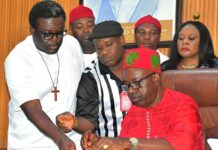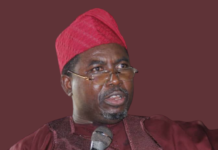The Federal Government is set to receive a new loan from the World Bank, with approval expected for loans totaling $2.25 billion on June 13, 2024. This funding will come through two major development projects.
The first project, the Nigeria Reforms for Economic Stabilization to Enable Transformation Development Policy Financing, is slated to receive $1.5 billion. The second project, NG Accelerating Resource Mobilization Reforms Programme-for-Results, is proposed to receive $750 million.
However, to secure the $750 million loan, the government may reintroduce previously suspended telecom taxes and other fiscal measures.
According to a document posted on the World Bank website, the government might reintroduce excises on telecom services and an EMT levy on electronic money transfers through the Nigerian Banking System, among other taxes.
Nevertheless, recent information suggests that the government has almost guaranteed the loan.
The Minister of Finance, Wale Edun, announced at the spring meetings of the International Monetary Fund and the World Bank last month that the nation had qualified for processing a loan described as “virtually a grant” of $2.25 billion from the World Bank at a one percent interest rate.
The package, approved by the Board of Directors of the World Bank, offers a 40-year term with a 10-year moratorium and a nominal one percent interest rate.
“We have qualified for the processing just this week to the Board of Directors of the World Bank of a total package of $2.25 billion of what you can call ‘the closest you can get to a free lunch’ – virtually a grant. It’s for about 10-20 years moratorium and about one percent interest,” Edun stated.
According to program information documents posted on the international lender’s website, the two projects aim to enhance Nigeria’s economic stability and resource mobilization capabilities.
It is expected that the funds will bolster Nigeria’s efforts in reforming economic policies and enhancing government resource mobilization, which is essential for the country’s long-term financial sustainability and economic resilience.
The document states that the primary aim of the PforR program is to boost non-oil revenues and safeguard oil and gas revenues from 2024 to 2028 at the federal level, emphasizing substantial tax, excise, and administrative reforms.
The program includes three main result areas: implementing tax and excise reforms to increase VAT collections and excise rates on health and environmentally friendly products, strengthening tax and customs administrations to enhance VAT compliance and the effectiveness of audits, and safeguarding oil and gas revenues by increasing transparency and net revenue contributions.
The PforR program includes technical assistance, supporting the Federal Inland Revenue Service and the Nigeria Customs Service to enhance taxpayer and trader compliance.
“The principal program development objective is to raise non-oil revenues and safeguard oil and gas revenues. This result area aims to increase the transparency of NNPCL’s financial and operational performance through audits and regular production of enhanced reports submitted to FAAC, including all relevant information; and increase net oil and gas revenues transferred to the Federation,” the report reads.
Additionally, the proposed DPF for Nigeria consists of a standalone operation with two tranches designed to support significant reforms in alignment with the government’s economic stabilization and recovery priorities.
This operation is structured around four key results distributed across two pillars: increasing fiscal oil revenues from 1.8 per cent of Gross Domestic Product in 2022 to 2.7 per cent by 2025, boosting non-oil fiscal revenues from 5.3 per cent to 7.3 per cent over the same period, expanding social safety nets to assist 67 million vulnerable Nigerians, and raising the import value of previously banned products from $11.3 million to $54.6 million by 2025.





